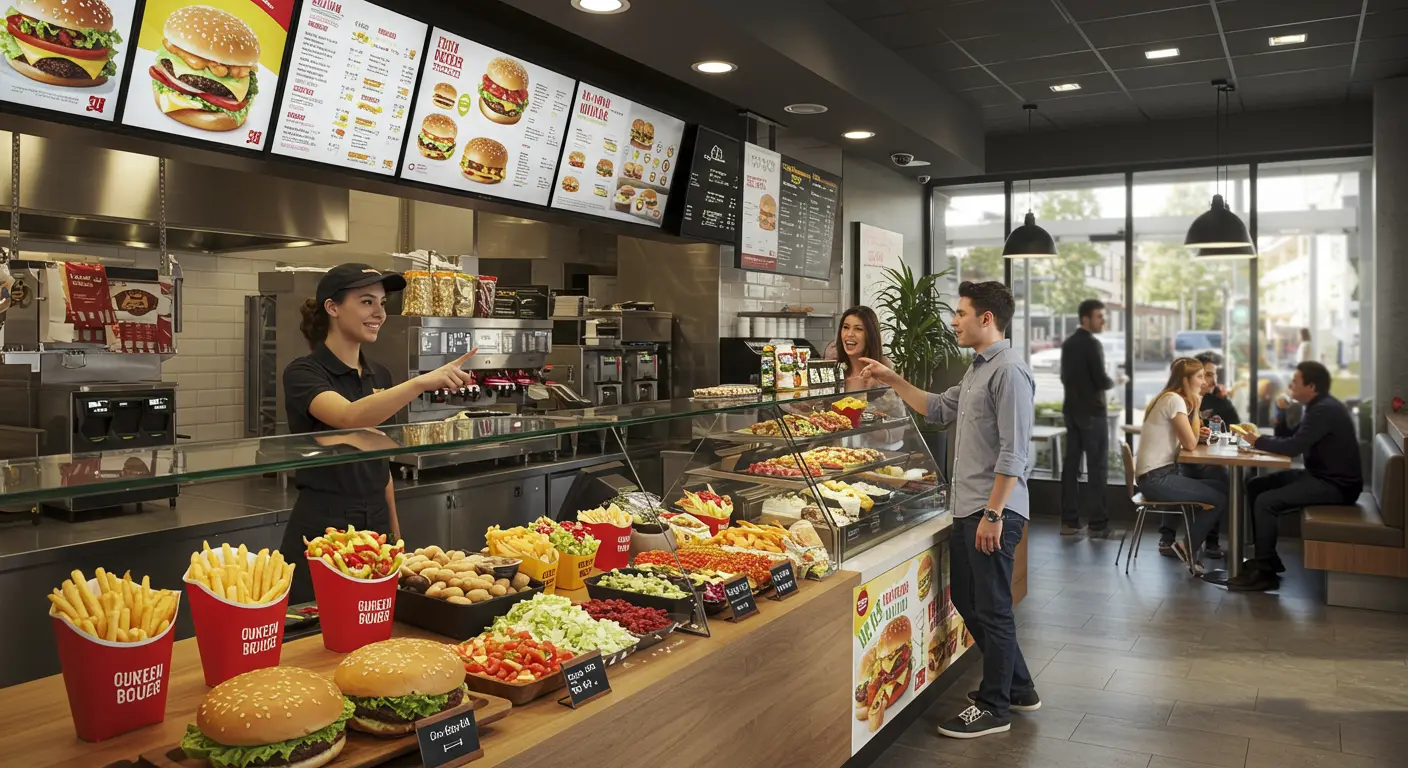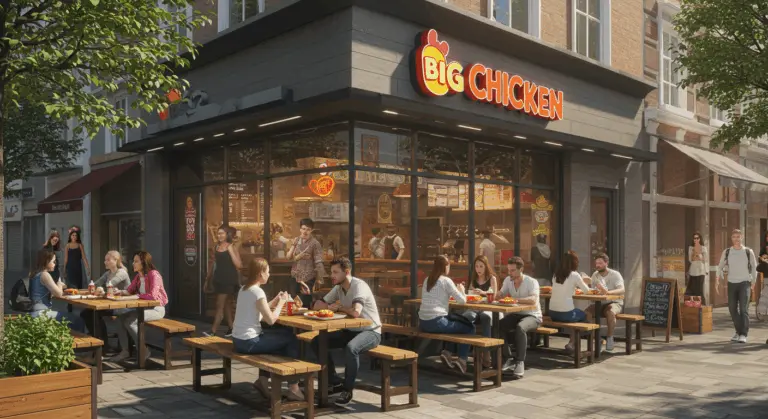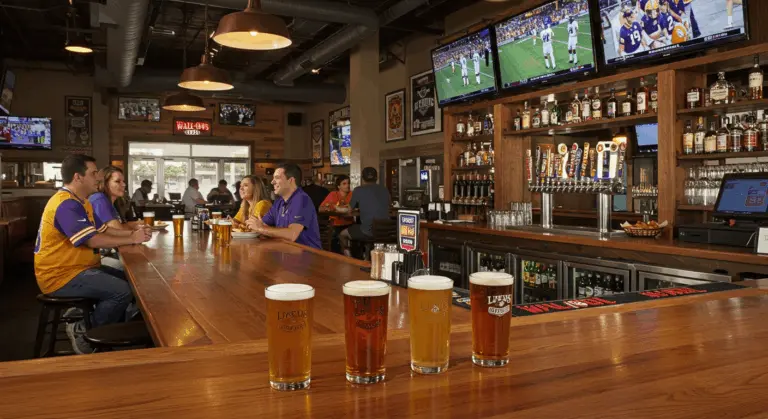Food Franchises – Opportunities and Insights
Exploring Food Franchise Opportunities
The food franchise industry offers an attractive path to entrepreneurship, but success depends on carefully evaluating key factors.
Key factors to evaluate include:
-
Initial Investment: Requirements vary significantly and typically include franchise fees, equipment costs, real estate expenses, and working capital.
-
Franchisor Support: Look for brands providing comprehensive training, marketing assistance, and ongoing operational guidance to ensure success.
Brand recognition and customer loyalty have significant impact over your venture’s trajectory. Well-established brands with sterling reputations frequently deliver immediate customer traffic and robust sales—a decisive edge over independent establishments. Before making your decision, examine profitability metrics: average unit volumes, revenue trajectories, and profit margins.
Personal alignment is just as important. Your enthusiasm for the brand, operational comfort level, and leadership capabilities will ultimately determine sustained success. The food sector offers over 130 franchise opportunities in categories such as:
-
Natural food
-
Sweets
-
Smoothies
-
Bakeries
-
Catering
Some of the most recognized food franchises include:
-
McDonald’s: Known for its global brand and efficient operations.
-
Chick-fil-A: Focused on high-quality food and exceptional customer service.
-
Taco Bell: Offers a popular Teamed menu with broad appeal.
-
Jersey Mike’s: A growing brand known for fresh-sliced subs and strong customer loyalty.
These established brands offer key benefits: established market presence and time-tested menus that propel new owners toward immediate momentum.
Investment Costs for Food Franchises
Understanding the financial commitment is essential. Total investment costs for food franchises span an enormous range, influenced by brand prestige, concept complexity, and geographic location.
The initial franchise fee—ranging from Chick-fil-A’s modest $10,000 to substantially higher amounts for premium brands—represents your entry ticket to brand ownership. Yet this fee is just the beginning of your total investment, which encompasses equipment, real estate, and essential working capital.
Investment levels vary significantly by brand:
-
Kona Ice: Requires a total investment of $80,000-$150,000, with a $15,000 franchise fee.
-
Sushi Concepts (e.g., ISO Sushi, Ace Sushi): Offer entry points from $20,000 to $135,000.
-
Subway & Dairy Queen: Known for having comparatively lower initial investment requirements than other major fast-food chains.
Ongoing costs are also a critical factor and include:
-
Royalty Fees: A percentage of gross sales paid to the franchisor.
-
Marketing Fees: Contributions to national advertising campaigns.
-
Operating Costs: Day-to-day expenses such as food, labor, utilities, and rent.
Financial prerequisites for aspiring franchisees are often substantial. Leading brands typically mandate at least 20% equity participation, $250,000 to $500,000 in readily available assets, and net worth ranging from $500,000 to $1,000,000. For larger concepts, the total estimated initial investment can range from $782,000 to over $2 million.
Entrepreneurs with limited capital can find accessible alternatives. Some franchisors offer entry points around $15,000, with total investments as modest as $20,000-$27,500 for niche or compact concepts. Ensuring you have sufficient liquid capital to cover both startup costs and operating expenses until profitability is essential for long-term success.
Low-Cost Food Franchises Under $10,000
For entrepreneurs with limited capital but a strong desire to enter the food industry, several franchise opportunities exist with initial investments under $10,000. These low-cost options provide an accessible entry point to business ownership while still offering the benefits of an established brand and support system.
Chick-fil-A dominates this space with its remarkably low $10,000 franchise fee. However, this low fee comes with strict requirements—the company is extremely selective in candidate selection, accepting fewer than 1% of annual applicants. Moreover, Chick-fil-A employs an unconventional ownership structure where corporate retains restaurant ownership while operators manage daily business—a trade-off that caps long-term equity potential while minimizing upfront investment.
Other affordable options often involve business models that do not require expensive retail spaces, such as:
-
Mobile food businesses
-
Kiosks
-
Small-footprint or home-based operations
These low-cost franchises achieve affordability through methods like:
-
Reduced equipment requirements
-
Smaller physical footprints
-
Home-based operational models
-
Innovative business structures that minimize overhead
Success in these affordable franchises requires strategic resource utilization, operational excellence, and scalable business execution. Despite lower capital requirements, these ventures require the same dedication, hard work, and business skills as their premium counterparts.
Franchise vs Independent Restaurant Ownership
The franchise versus independent restaurant decision represents a crossroads moment for food entrepreneurs. Each path offers distinct rewards and challenges that will shape your entire business journey.
Franchise restaurants offer significant benefits through proven branding and instant market recognition. Opening a franchise location grants immediate access to customers who already know and trust the brand, menu, and quality standards. This built-in recognition can reduce the time needed to build a customer base from years to months—a major advantage over independent establishments.
Comprehensive training and ongoing support are another key franchise benefit. Franchisors typically offer comprehensive initial training programs covering all aspects of operations, from food preparation to management practices. This continuous support encompasses regular updates, operational coaching, and problem-solving assistance—invaluable for newcomers lacking restaurant industry experience.
However, these benefits come with significant constraints:
-
Financial Obligations: Franchisees pay initial fees, ongoing royalties (typically 4-8% of gross sales), and marketing fees.
-
Lack of Creative Freedom: Franchisees must adhere to strict operational guidelines and menu requirements, limiting flexibility.
Independent ownership, conversely, provides complete creative control over concept development, menu design, aesthetic choices, and operational philosophy. This autonomy empowers owners to craft distinctive dining experiences and pivot rapidly as market conditions or customer tastes evolve. Independent owners retain all profits without paying royalties, potentially leading to higher margins if the business succeeds.
Yet this freedom comes with significant challenges: amplified risk and comprehensive responsibility. Independent ventures require substantial effort to build brands from scratch, craft original menus, build operational frameworks, and cultivate customer bases—all without established brand recognition as a safety net. The failure rate for independent restaurants is notably higher than for franchises, with many closing within the first few years of operation.
Franchises typically offer smoother management experiences for novice owners through proven systems and support networks. Independent restaurants better serve creative visionaries willing to embrace elevated risks. Your decision should align with your experience level, financial resources, creative ambitions, and tolerance for risk.
The Importance of Delivery in Food Franchises
Delivery has evolved from a nice-to-have service to an essential business component, fundamentally changing how food franchises compete.
Modern food franchises now consider delivery essential for financial vitality and market relevance. Consumer habits continue shifting, making delivery capabilities non-negotiable. Extending reach beyond physical locations dramatically expands customer bases while generating additional revenue streams that can substantially boost overall profitability.
Most franchises currently rely on third-party platforms—DoorDash, Uber Eats, Grubhub—to power their delivery operations. While these partnerships offer instant access to established infrastructure and customer networks, they charge substantial commission fees—typically 15-30% of order values. These fees can substantially impact profit margins, prompting many franchises to reconsider their delivery strategies.
Responding to these margin pressures, innovative franchise brands are developing proprietary delivery systems. In-house delivery enables direct customer relationships, valuable data capture, and elimination of high commission fees. However, this strategy demands substantial investments in technology infrastructure, logistics coordination, and personnel expansion.
When evaluating a franchise, assess its delivery strategy by asking key questions:
-
Does the franchisor have established partnerships with third-party delivery platforms?
-
Are technology systems in place to manage delivery orders efficiently?
-
Is the menu designed to maintain quality during transport?
-
What percentage of revenue comes from delivery for existing locations?
Franchisors adapted to the delivery-focused market typically provide support such as:
-
Optimized packaging solutions to maintain food quality.
-
Integrated point-of-sale (POS) systems for streamlined order management.
-
Marketing strategies specifically targeting delivery customers.
Financing Options for Food Franchises
Securing adequate financing is often the biggest challenge for aspiring franchise owners. Fortunately, multiple pathways can make franchise ownership achievable.
-
SBA Loans: Government-backed loans from the Small Business Administration offering favorable terms, such as lower down payments and longer repayment periods.
-
Traditional Bank Loans: Conventional business loans from banks and credit unions, which may have faster approvals but often require stronger credit and larger down payments (20-30%).
-
ROBS (Rollover for Business Startups): A method to use retirement funds from a 401(k) or IRA to invest in a franchise without penalties, eliminating debt but placing savings at risk.
-
Online Lenders: Digital platforms offering faster access to capital, often with more flexible approval criteria but typically at higher interest rates.
-
Alternative Models: Newer options include revenue-based loans, where repayment is tied to sales, and lease-to-own agreements for equipment.
Many franchisors provide direct financing assistance or maintain relationships with preferred lenders who understand their specific business models. These partnerships can accelerate the financing process while potentially securing more favorable terms based on the franchisor’s proven track record. When evaluating franchise opportunities, inquire about available financing support as this can significantly impact your ability to launch successfully.
Successful Food Franchise Brands to Consider
The food franchise landscape includes many different options, featuring standout brands across varied cuisines, investment tiers, and operational models that deserve serious consideration.
-
McDonald’s: A dominant global brand requiring a high investment ($1-2.2 million) but generating average annual sales of around $2.9 million per location.
-
Chick-fil-A: Features a unique, low-fee ($10,000) operator model with an extremely selective process and industry-leading unit volumes exceeding $4.5 million.
-
Subway: An accessible option with lower total investment ($150,000-$350,000) and a flexible footprint, currently undergoing brand revitalization.
-
Jersey Mike’s: A fast-growing, fast-casual brand ($169,000-$804,000 investment) known for fresh ingredients and strong franchisee satisfaction.
-
Emerging Niche Brands: Concepts like Tropical Smoothie Café or The Halal Guys offer opportunities in growing market segments with unique offerings.
Researching and Evaluating Franchise Opportunities
Smart investing demands a systematic research and evaluation approach. This methodical process helps identify franchises that align with your goals and resources while minimizing potential risks.
Begin with honest financial assessment about your true capacity. Beyond advertised initial investments, maintain sufficient liquid reserves for unexpected expenses and operational sustainability until profitability—typically 6–12 months for food franchises. Most franchisors have specific financial requirements, including minimum net worth (often $500,000-$1,000,000) and liquid asset thresholds ($250,000-$500,000).
Thorough franchisor investigation should examine company history, leadership credentials, growth patterns, and any litigation baggage. Evaluate the training and support systems offered, including initial training duration and location, ongoing support mechanisms, and technology platforms provided. Superior franchisors deliver comprehensive initial training followed by consistent field support and regular system enhancements.
Territory availability and protection policies differ dramatically across franchise systems. Some grant exclusive territories with clear boundaries; others permit multiple units in tight proximity. Understanding these policies is crucial for assessing long-term growth potential and competitive protection. Similarly, investigate any specific licensing requirements for food service operations in your target location, as these can impact timeline and costs.
The Franchise Disclosure Document (FDD) is your most important research tool. With a franchise attorney, carefully review all 23 sections, paying close attention to:
-
Item 19: Financial Performance Representations
-
Item 7: Estimated Initial Investment
-
Item 12: Territory Rights
Paperwork alone isn’t enough. Connect with current and former franchisees for unfiltered insights. Ask them about:
-
Their experience with franchisor support.
-
Actual vs. projected financial performance.
-
Unexpected challenges they faced.
-
Whether they would make the same investment again.
Local market analysis must evaluate competitive landscape, demographic alignment with target customers, traffic patterns, and labor market dynamics. Even exceptional franchise concepts can falter in poor locations or oversaturated markets.
Finally, evaluate how well the franchise model aligns with your personal strengths, limitations, and preferences. Consider whether the daily operations, management requirements, and work schedule match your skills and desired lifestyle. Even the most profitable opportunity can fail if it demands capabilities or commitments that clash with your personal circumstances.
Conclusion: Choosing the Right Food Franchise
Selecting the ideal food franchise is an important decision that balances financial realities with personal aspirations. Success hinges on focusing on these essential factors:
-
Investment Level: Ensure the initial and ongoing costs align with your financial capacity and risk tolerance.
-
Franchisor Support: Prioritize brands with robust training, marketing, and operational guidance.
-
Brand Strength: A recognized brand can accelerate growth, but ensure it fits your target market.
-
Profitability: Scrutinize financial performance data like unit volumes, profit margins, and ROI.
-
Personal Fit: Your passion for the concept and alignment with the company culture are crucial for long-term success.
The food franchise industry offers many different options. Quick-service titans demand seven-figure investments, while specialized concepts remain accessible under $100,000. This vast spectrum ensures most aspiring entrepreneurs can discover concepts matching their financial capacity, skill sets, and ambitions. Through meticulous research, candid self-assessment, and realistic expectations, you can find the food franchise opportunity that provides your optimal pathway to business ownership and financial freedom.







